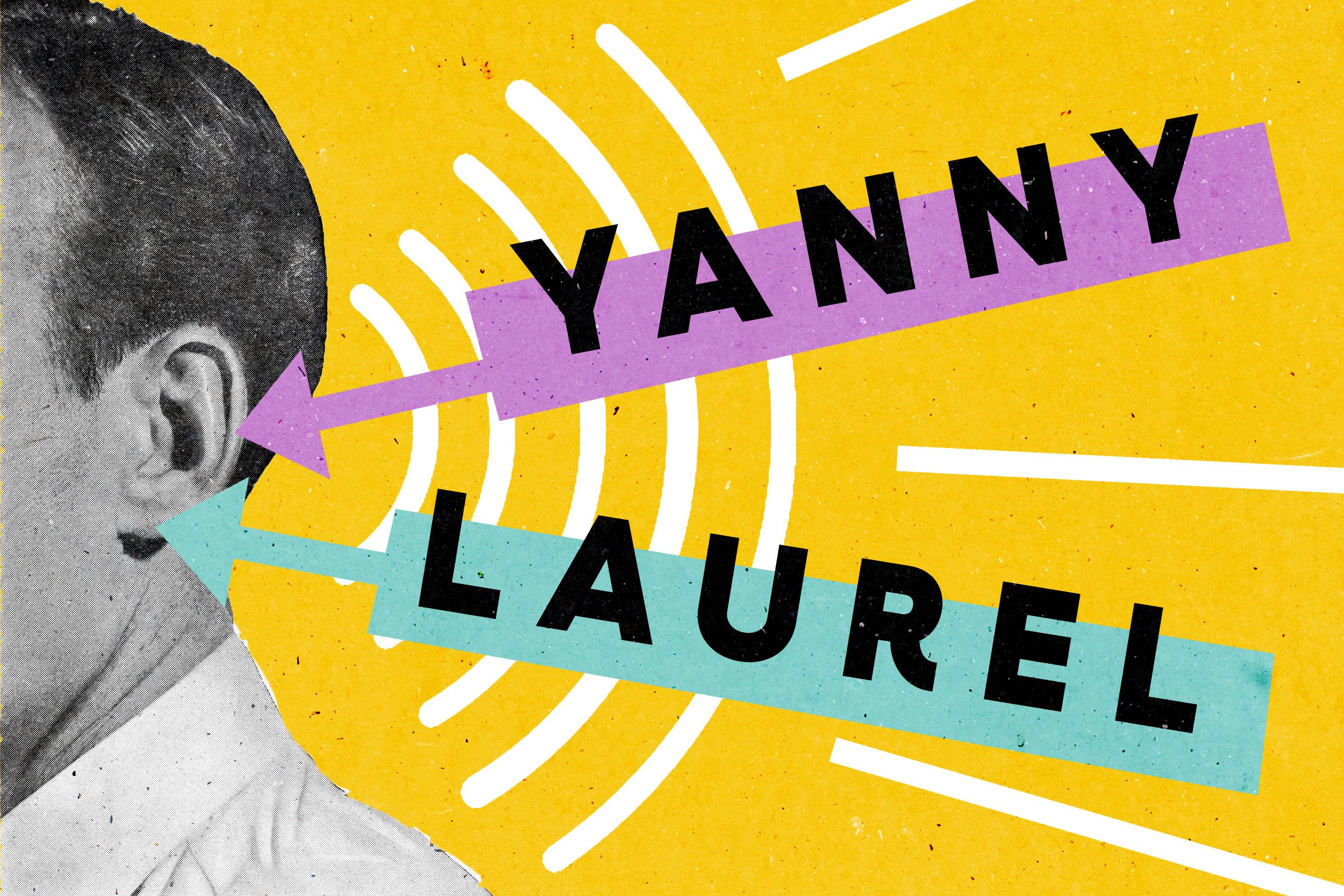
On February 26, 2015, the internet lost its collective mind trying to decide if The Dress (capital T, capital D) was black and blue or white and gold. Factions were formed. Sides were switched. Laptops everywhere were turned into Magic Eye posters as people tried to see the other side. Also that day, some llamas came along and took us for a wild ride!
Three years later, the next sensory illusion has arrived, and this time it’s auditory. A looped sound bite circulated on social media. To some it says “Yanny,” and to others it’s “Laurel.” What you hear depends on a lot of factors, including (but likely not limited to) how old you are, whether you’re playing the clip from your phone or laptop speakers, and your brain’s historical and subjective interpretation and history with language and phonetics. There’s a very good breakdown of the science behind the clip here.
The clip originally came from Reddit (of course), where it was posted May 12, and is indeed a recording of the word “laurel.” It went viral after social media influencer Cloe Feldman tweeted it.
Unlike in the case of The Dress, a consensus exists. Popular Science had an expert analyze the waveform of the spoken name and found that it lines up much more closely to the waveform of the word “Laurel.” The evidence appears (heh) sound. Yet the Yanny-versus-Laurel debate plays on, leading to an unending replay of the clip. The Yannys out there can’t hear “Laurel,” and they’re losing their minds. I was originally on Team Yanny, but have switched to I-can’t-hear-anything-else Team Laurel.
Internet linguist Gretchen McCulloch explains why this audio illusion—which appears to have a resolution that The Dress never had—feels equally divisive and possibly more maddening. (McCulloch, for the record, hears Laurel on her computer and Yanny on her phone.) “Audio illusions necessarily exist within time -- you have to play the audio clip over and over again to experience them. Whereas visual illusions can stay static while you examine them or zoom in on them or cover parts of them, so it feels more like you’re in control,” she says. It’s true: The nature of a sound bite makes this debate feel, as she put it, more “slippery.” A sound can be paused, but that introduces silence or an absence of the sound. The sound can’t be isolated into shorter moments the way a photo can be zoomed in.
Still, it’s not only the inability to isolate a sound that makes this illusion brain-busting. There’s also an element of invisibility. A 2014 AsapSCIENCE video explains the McGurk effect, which is when the brain will alter what it hears based on what it sees. In the video below, a man is saying “bar, bar, bar,” but changes his lip movement at one point to make it look like he’s making an F-sound and saying “far.” The audio was never changed, but the brain sees the F-sound shape and inserts the word “far” on its own, overriding what the ears hear. What sounds the brain computes is hugely influenced and aided by what it sees.
The McGurk effect is fascinating because even when you’re prepared, when you know it’s “bar” and not “far,” once it’s taking hold it can’t be stopped. The eyes will still overpower the ears and tell the brain that it’s hearing a word it in fact is not. This relationship also works in reverse sometimes, with the ears overriding the eyes, as the AsapSCIENCE video explains.
There are other ways in which your eyes can make your ears hear something else, as seen in this YouTube video that McCulloch pointed to on Twitter:
While this misreading isn’t caused by reading someone’s lips, the visual suggestion of an object tips your ears away from the actual word and to the one in the picture. While Yanny versus Laurel doesn’t have a visual effect to confuse us, the absence of visuals is part of what makes it difficult for our brains to decipher this particular riddle. If the McGurk effect were a factor, the brain might get the word wrong, but it would have an easier time analyzing and deciding. Again, hearing gets a helping hand from seeing.
Yanny versus Laurel is exasperating for one last reason: because it’s trickery. Psycholinguist Suzy J. Styles tweeted that the audio was probably engineered to confuse our ears, because, as she put it in another tweet, “there are more than three of these format bands.”
McCulloch explained these “format bands” to me, and it’s quite technical. Essentially, the sounds coming from the clip would indicate a voice moving in a way voices do not. (Here is a very good, more detailed explanation from Styles.)
“What’s going on here is for this band of sound, you can hear an F1 or an F2,” McCulloch says. “You can either hear it as the highest low thing, or the lowest high thing.” What each of us hears depends on several factors, as previously mentioned. But this clip was made to fool us. McCulloch also mentions that it’s no coincidence the names used in the clip are Laurel and Yanny. These words are “singable” words, she explains: no hard consonants. Singable words are able to sustain uninterrupted sound. “The reason that Laurel and Yanny can possibly sound similar is a property of the sound that makes them up,” McCulloch says. It’s not just the way they’re being said, it’s what they are. “You can’t do this with Peter and Kevin” she says.
Unlike The Dress, Laurel and Yanny was not found in the wild; it was created to deceive and separate us. I asked McCulloch why she thought this particular piece of viral content (are we calling it a meme yet?) caused such a stir. “It’s because it makes you start doubting your own subjective experiences and your own reality.” Hopefully today we will all accept the one true reality: It’s Laurel.